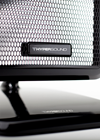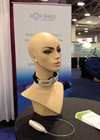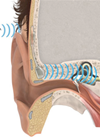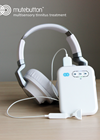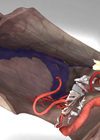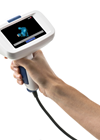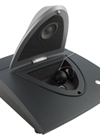Spotlight on Innovation
Directed audio pointing the way to a great listening experience – HyperSound ClearTM
In this Spotlight on Innovation we explore an innovative ultra-thin speaker system compatible with TVs, which can be programmed by a hearing professional to a listener’s hearing profile and preferences to deliver a directed 3D listening experience. Whether your patients...
Reza Band® UES Assist Device
Members of the ENT and Audiology News team spoke to Rose Henrichs, Solutiones Vobis and Nick Maris, CEO and President of Somna Therapeutics about the Reza Band device. Nick Maris. Rose Henrichs. What is your involvement in Reza Band? And...
New bone anchored hearing implant reaches clinical milestone
A new implant for bone-conduction hearing, BCI (Bone Conduction Implant), has been developed by Bo Håkansson and his team of researchers at Chalmers University of Technology and Sahlgrenska University Hospital, both in Gothenburg, Sweden. Unlike most bone-conduction devices used today,...
Subjective tinnitus – adding mutebutton™ to your tinnitus toolbox
Neurophysiologic tinnitus or subjective tinnitus is typically a sound or a number of sounds that originate from the auditory nervous system. They are unwanted sounds that do not exist in the external environment. They can be heard in one or...
VES2 is ready to bring ear surgery into your living room
The VES2 virtual reality bone drilling simulator is ready and it is freeware! After a long development period we are now able to invite everybody to try the simulator and use it for training, for a inner ear anatomy, and...
Leaving an impression – OTOSCAN ear scanning solution
Every person has uniquely-shaped ears that continue to grow over time. Making an accurate reproduction of the ear is an important part of delivering a customised ear product. From the early 1950s, this was achieved using a paste which set...
Tele-audiometry – a ShoeBOX solution
Access to hearing assessment is a global challenge. In relation to the global burden of hearing loss World Health Organisation’s (WHO’s) recent estimate (2013) is that 360 million people in the world have disabling hearing impairment. Two-thirds of these people...
How to tell if a bone anchored hearing device is working?
Bone anchored hearing aids are becoming increasingly more commonplace with more than 120,000 users worldwide. These devices are based on the principle of direct bone conduction, where sound is transmitted directly through the skull via a titanium implant to the...


